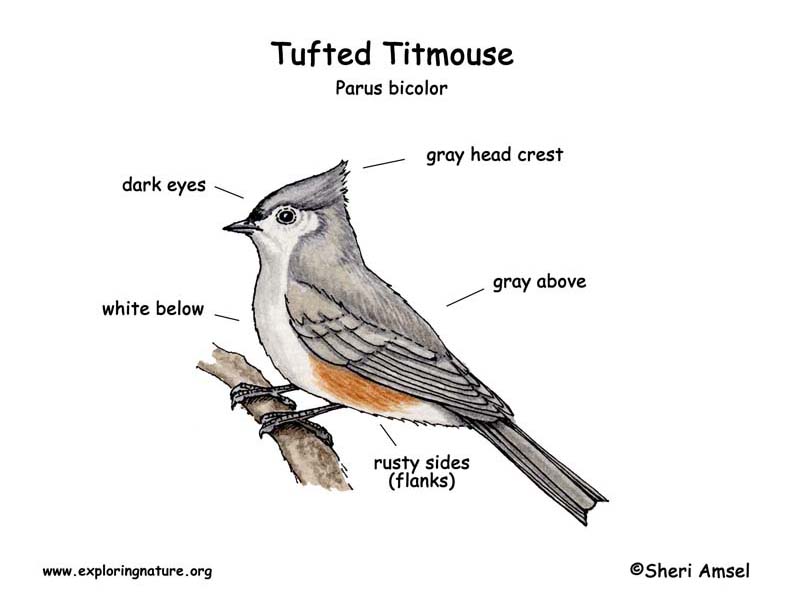

They live all year in southern Ontario and the eastern half of the U.S. from Minnesota east and south into Mexico.
They live in moist woodlands, swamps, orchards, parks, and yards.
They are gray above, white below with a gray head crest and dark eyes. They have rusty sides (flanks). Males and females look alike.
They will visit bird feeders.
They eat insects and seeds and will visit bird feeders.
They nest in tree holes using leaves, moss, grass, and bits of bark. Females lay 3 – 9 eggs with reddish spots.
Domain: Eukarya
Kingdom: Animalia
Phylum: Chordata
Subphylum: Vertebrata
Class: Aves
Order: Passeriformes
Suborder: Passeri
Family: Paridae
Genus: Baeolophus
Species: B. bicolor
When you research information you must cite the reference. Citing for websites is different from citing from books, magazines and periodicals. The style of citing shown here is from the MLA Style Citations (Modern Language Association).
When citing a WEBSITE the general format is as follows.
Author Last Name, First Name(s). "Title: Subtitle of Part of Web Page, if appropriate." Title: Subtitle: Section of Page if appropriate. Sponsoring/Publishing Agency, If Given. Additional significant descriptive information. Date of Electronic Publication or other Date, such as Last Updated. Day Month Year of access < URL >.
Amsel, Sheri. "Tufted Titmouse" Exploring Nature Educational Resource ©2005-2024. December 13, 2024
< http://exploringnature.org/db/view/116 >

